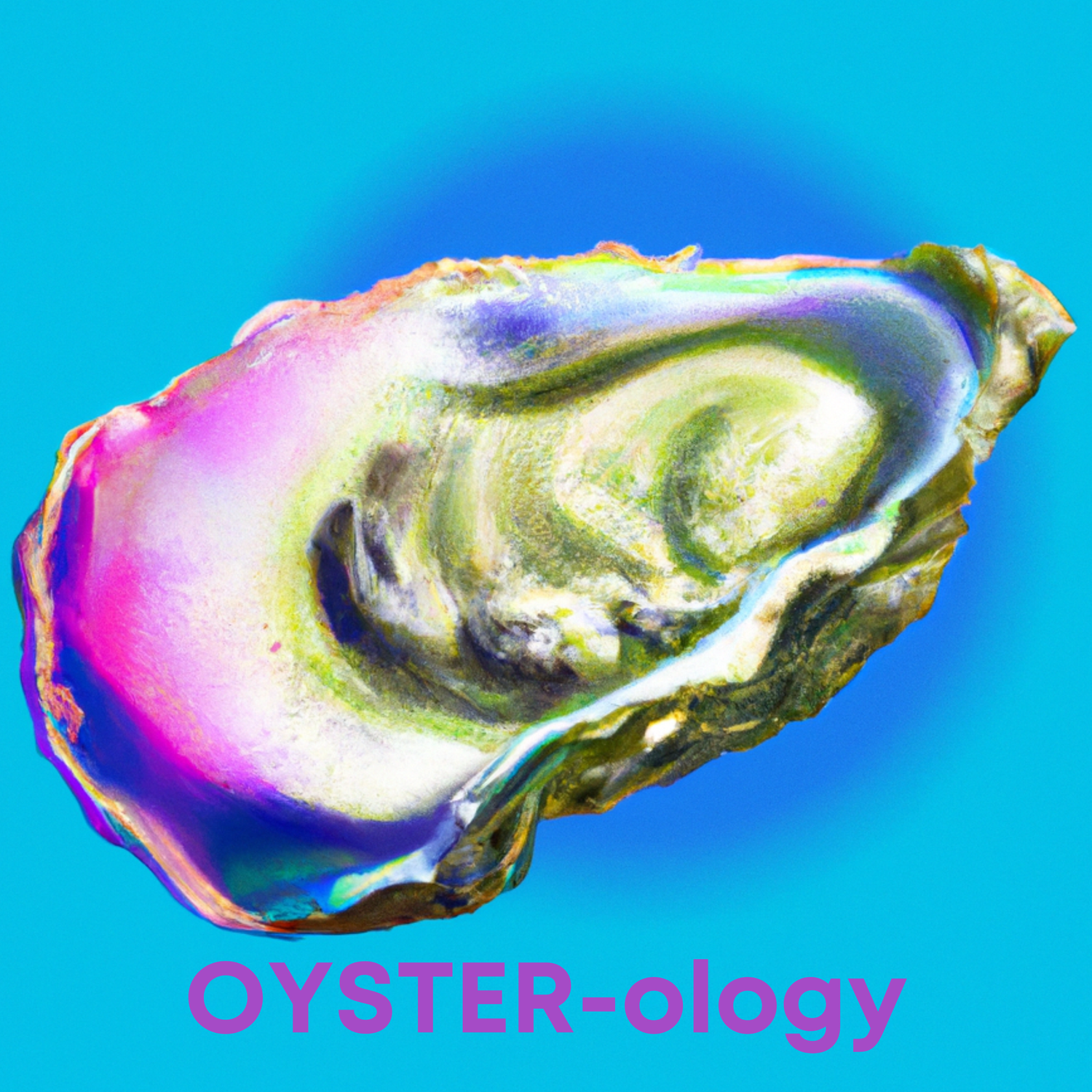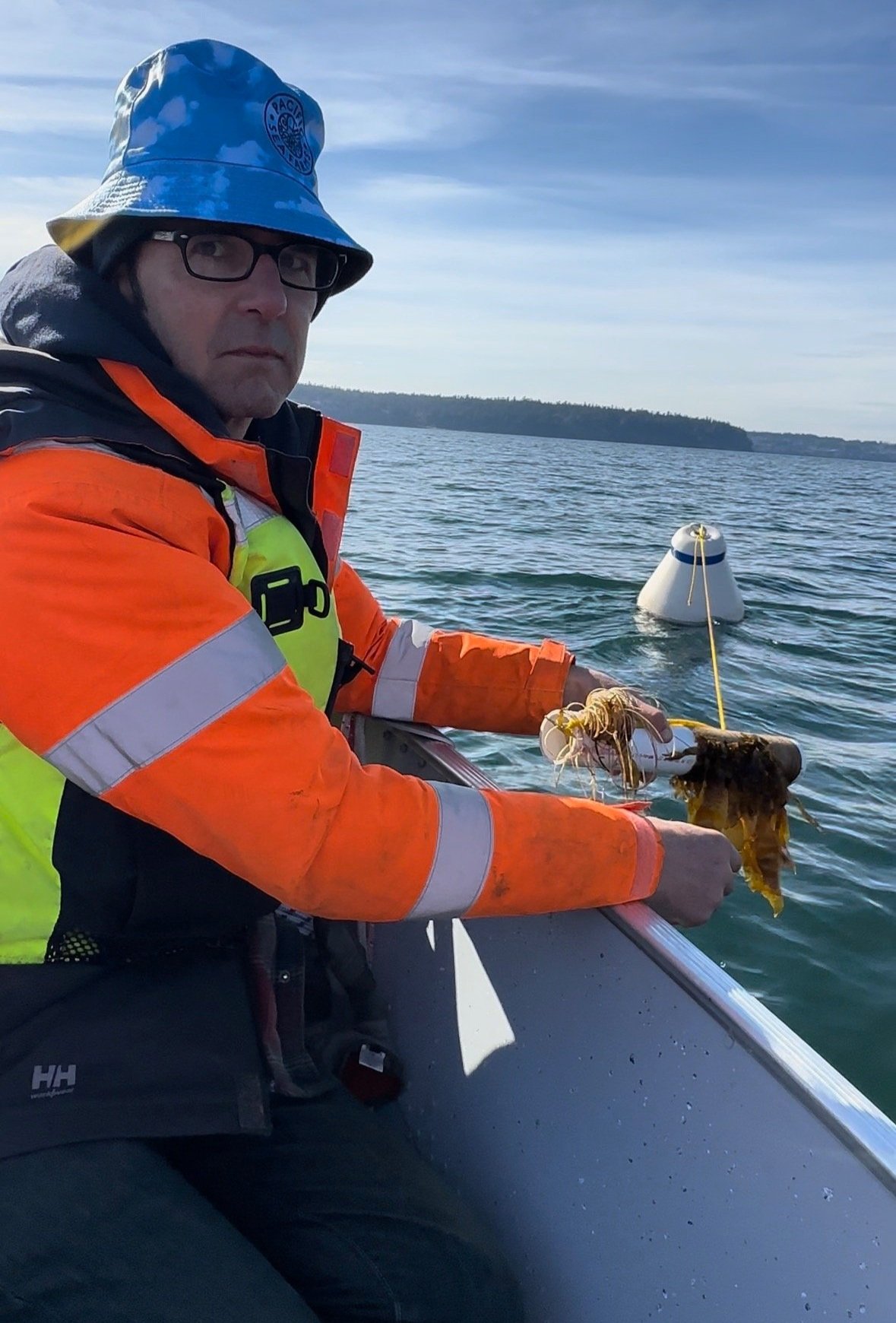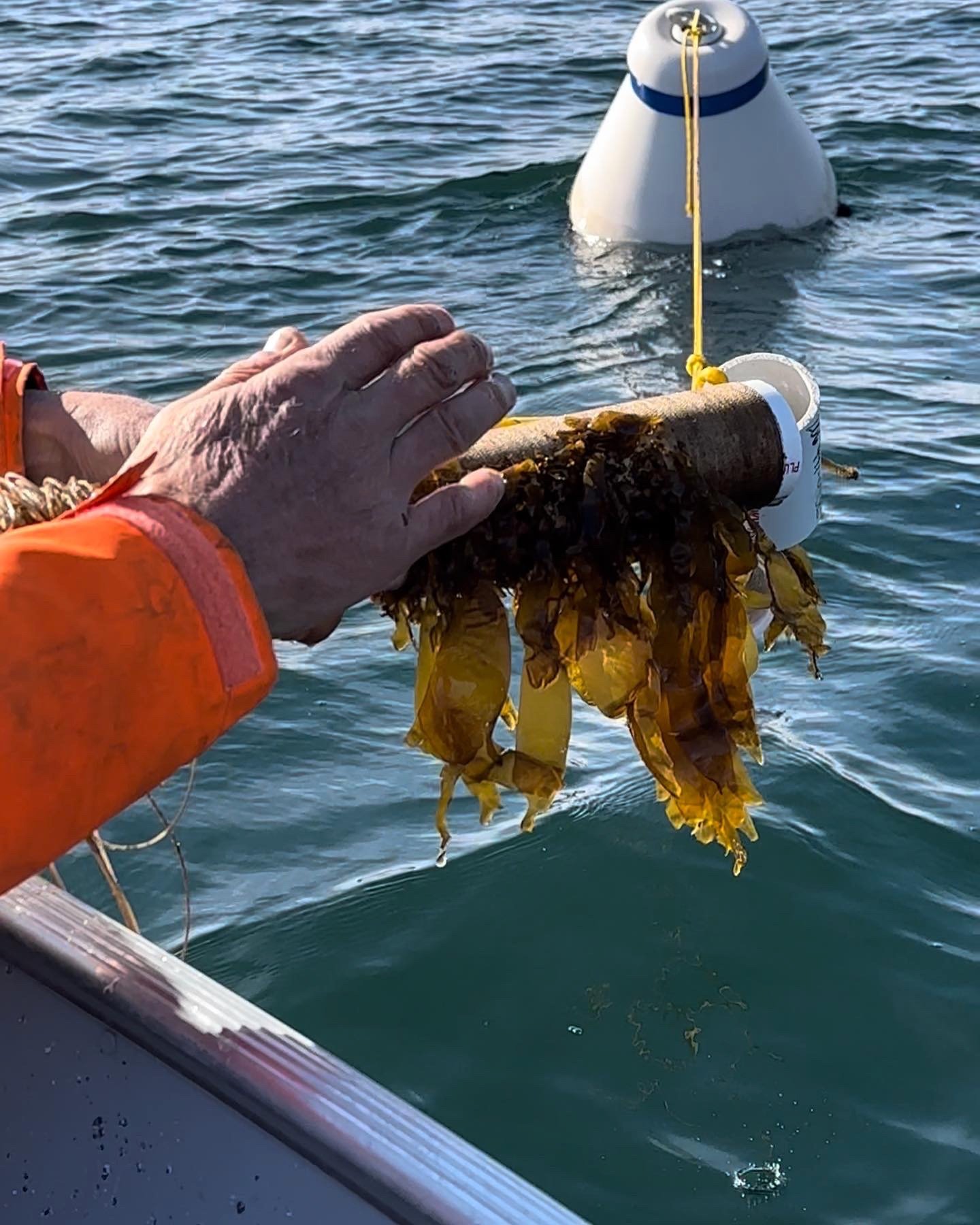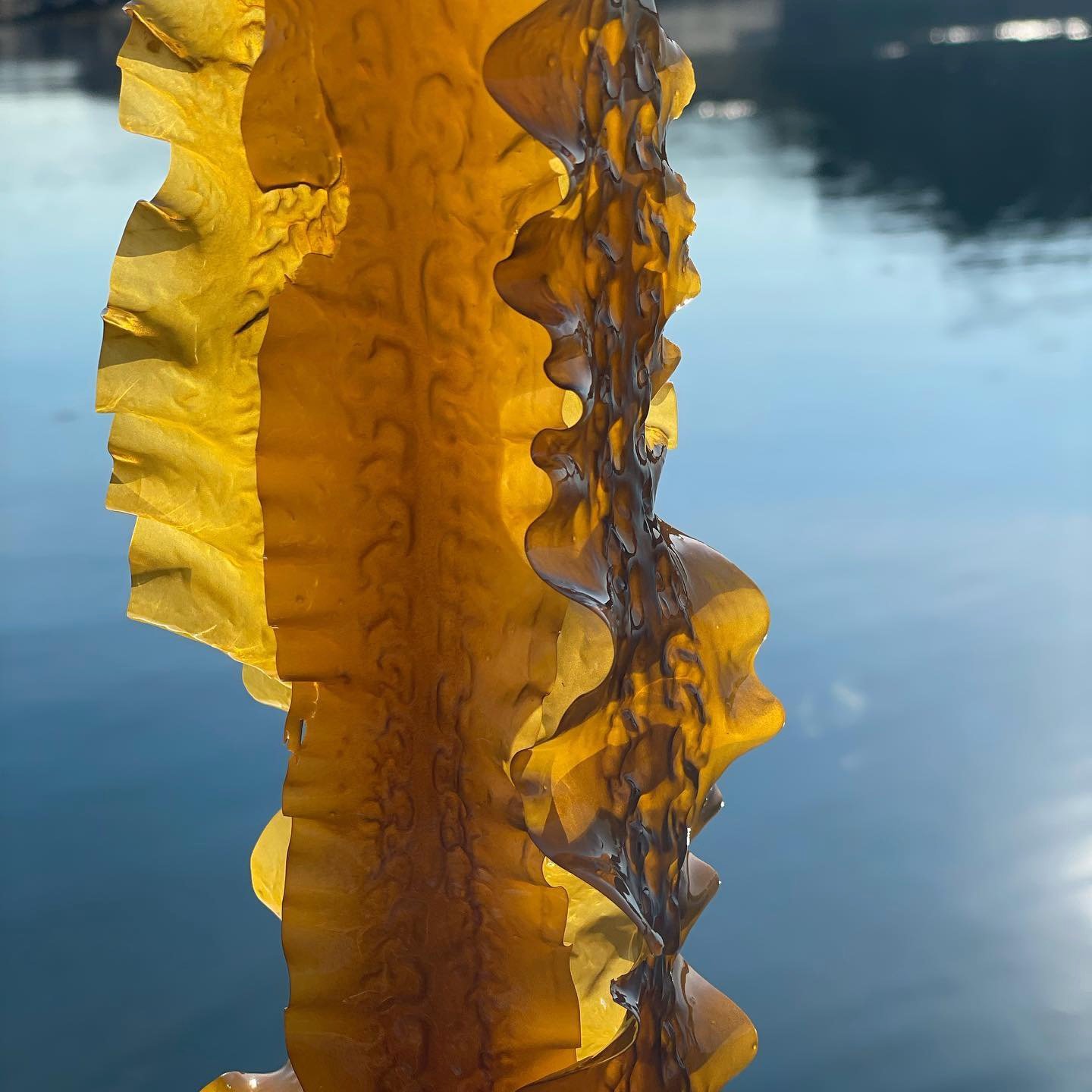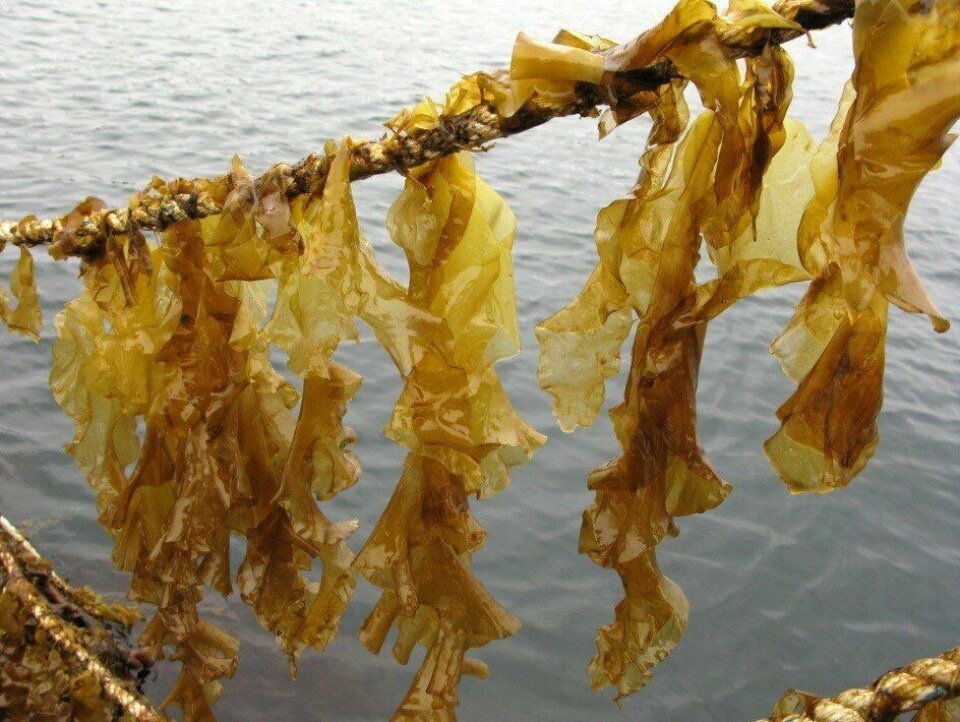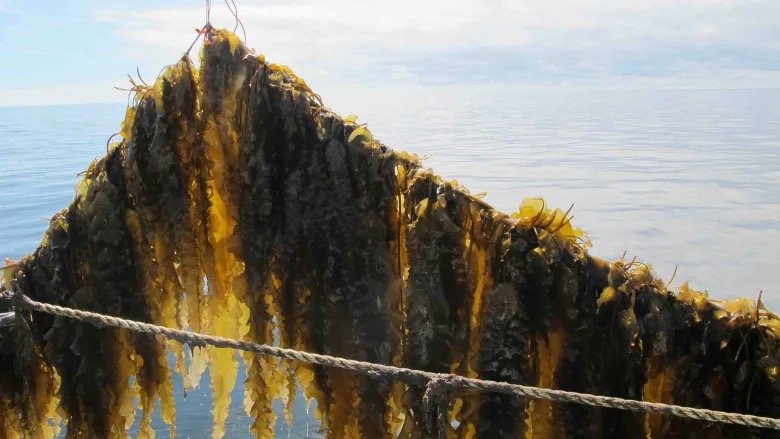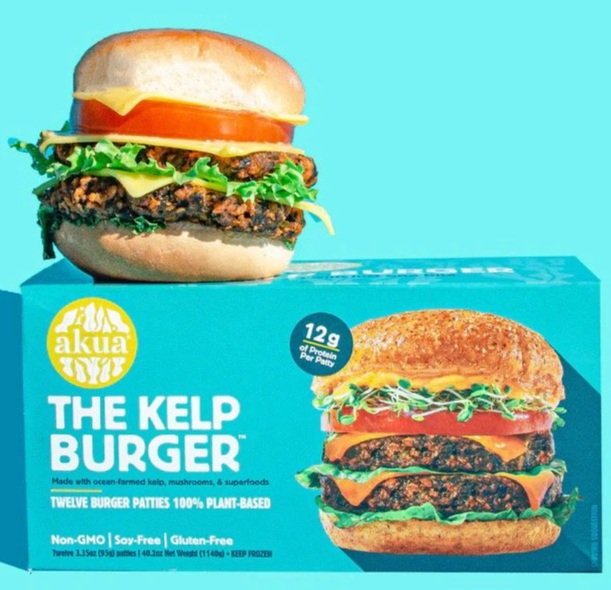The Watery World of Kelp Farming
/“Well, here we are,” Mike Spranger announced as he killed the engine and the small skiff drifted slowly against the current. I looked around and saw nothing but water and cliffs by the shoreline looming off to starboard. We were in the Colvos Passage channel, a wide area of swift moving water curving around the southwestern tip of Puget Sound’s Vashon Island. The sun sparkled on the surface and the icy summit of Mt. Rainier gleamed against the blue sky in the distance. I surveyed the featureless water around me. “So, what are we looking at?” What we were looking at was a ten acre seaweed farm site, where a small startup company called Pacific Sea Farms is planning to grow sugar kelp for food.
Mike and his co-founder, Gretchen Aro, started Pacific Sea Farms with a goal of creating a regenerative aqua farm that provides a new, sustainable food source that is good for the environment and has virtually no negative impact on the people or waters of Vashon Island. It was after a thirty year career as a logistics expert that Mike decided it was time for a change in lifestyle and to focus on giving back to the world in some small way. Listening to a Freakonomics podcast about regenerative sea farming inspired him to look deeper into the business of sugar kelp growing. What he found changed his life.
It’s all about seaweed, or in this case Sugar Kelp (saccharina latissima). “Very few people understand seaweed in the US,” Mike explained. “But once you learn about it and realize its benefits it becomes pretty exciting.” And so began my first lesson on the topic of sugar kelp and the future of sustainable food in the world. It turns out that everything I thought I knew about seaweed – which wasn’t much – was basically wrong, even down to what kelp is, or isn’t. “It’s not a plant,” Mike said, “but rather an algae known as a heterokont, falling within a multi-celled organism category known as protists.” But to my untrained eye it both looks and grows like a plant – a tree even – except it’s underwater. Kelp, Mike explained, naturally grows as a forest in shallow oceans. Its body, or thallus, consists of a trunk-like stem – the stipes – which rises up and produces blades (like leaves) from which algae spores (like eggs) slough off, germinate with algae sperm and drop down to cling to the sea bottom by way of hold-fasts (like roots). From there they grow, swaying with the current and providing habitat for any number of animals, from fish to crabs and a host of invertebrates. But that’s not all, because in addition to creating this biodiversity, kelp absorbs harmful carbon, nitrogen and calcium from the water, helping to regulate the acidity and purity of the sea. Its main form of sustenance are nutrients in the water and the sun, which through photosynthesis enables it to grow as much as 18 inches in a day. This rapid growth, in turn, increases its ocean house-cleaning abilities even more, and so on. Spread this principle across a ten acre farm with thousands of kelp and it can have quite a healthy impact on the environment. See? Exciting.
But not so fast, because starting a kelp farm is more involved than one might think. Before you can put algae in the water there are numerous more land-based hurdles to overcome, including obtaining approval and permits from as many as eight different agencies as well as support from local communities and the Usual and Accustomed Rights (of agreement or refusal) of Native Americans in the area. And while Mike believes that most of the requirements and interests of these agencies and people make good sense, there isn’t a ‘Seaweed Coordinator’ in place to bring all the information together. So you have to do it yourself. And then there are concerns over visual disturbance and whether a kelp farm will change the view over water that many shore homeowners currently enjoy. “It’s like those giant windmills out West which generate electricity. Everyone wants them; they just don’t want to see them” But the truth is there is little to see of a sugar kelp farm from outside of the water.
Courtesy of Pacific Sea Farms
Pacific Sea Farm’s plan is beautifully simple and mimics nature’s way, except the kelp grows from the top down, rather than from the bottom up. From each corner buoy of the farmsite will run a heavy line – about six feet below the surface – to define the perimeter of the site. Between those lines will run smaller, taught lines, stretching across the waterfield like a grid. It is on these lines that the kelp grows downward into the depths, feeding, growing and cleaning like crazy. Between the kelp they’ll grow oysters in baskets, which will clean the water even more (one oyster can filter and clean as much as 50 gallons of water each day) and add greater biodiversity to the farm. It’s a logical and elegant design — all practically invisible to anyone on land.
We approached a lone buoy floating a few yards ahead. This was Mike’s test garden, where he was giving a sample run on his growing plan for the kelp. He pulled a plastic pvc pipe up from the depths, which he had first soaked in a tub containing seawater and the spores of 40 different kelp algae from the local waters near the farm. The spores cling to the thin line and begin to grow — the yellowish-green algae quickly appearing like the start of a long leaf, translucent and smooth with a delicate, wavy edge. This thin algae line is then wound along the stouter line running between the perimeter lines under water across the width of the farmsite. As the algae grows it takes root on the taught line and begins to thrive in the nutrient-rich tidal water. At early summer harvest time Mike will coil in the heavy line to remove the long kelp into a boat; in the Autumn he’ll do it all over again. At least that’s the plan.
While the conditions for growing sugar kelp may be perfect, it is not without its challenges and risks. “It’s possible that the current is too strong and will just rip all the kelp off the lines” Mike said. And then there is the risk of destruction of the kelp by some of those sea creatures that will live in the kelp-formed habitat, like sea urchins, starfish and various invertebrates. “But most of them are on the bottom,” Mike says confidently, “and because our kelp will grow downward from suspended lines, they don’t actually touch the bottom.” Still, he accepts that the first year is almost like an experiment to learn what works.
There is a lot to learn in the first season of growing but it’s not all guesswork for Pacific Sea Farms – seaweed farming is not new – indigenous people of the region have historically grown and used seaweed for perhaps thousands of years. In Asia kelp farms are found along many coastlines where it is grown for food and well known as Kombu in Japan, Dasima in Korea and Haidai in China. But a modern notion of farming kelp, just one of many forms of seaweed, is largely unknown in the US because not many people are doing it. The few who are growing are on the East Coast and Alaska. In Washington only one other sugar kelp farm exists, with a few others attempting to start. Like Pacific Sea Farms, these farms are small-time operations which don’t get the notoriety like shellfisheries, and few people even know what to do with it.
Seaweed is commonly used in cosmetics and industrial products. In the US it's most common in the health drink world as Kombucha. It is gradually developing “superfood” status in small circles, which may be a valid characterization, given its healthy delivery of vitamins and minerals and more than five times as much protein as soybeans grown on land – with no negative impact on the environment. But outside of health food stores and Asian kitchens in the US there is little awareness of sugar kelp as food. “We need people to cook with it in restaurants and on social media to raise the consciousness of seaweed as food,” Mike said. It may take 10 or 15 years, but his goal is to help seaweed to become a regular protein option in most restaurants. And while Martha Stewart, Bon Appetit and even Oprah have written about seaweed as food, the trend is slow to grow. Fortunately there are increasing numbers of chefs playing with kelp in upscale restaurants, small food companies trying to push kelp, and even in more humble kitchens – including Mike’s – where his teenage daughter is experimenting with kelp in such things as tea, custard and even bonded with rice paper and avocado oil to form a crispy snack. “It tastes and feels like fried salmon skin,” Mike says proudly. “It’s really delicious.”
It’s always inspiring to see something that has as many potential benefits as Pacific Sea Farms’ regenerative sugar kelp goals. To say that they are putting it all on the line is an understatement, but in a place like Puget Sound where little kelp aquaculture has been tried, someone needs to take the risk. “We’re not quite on the bleeding edge of this but we’re definitely on a leading edge in Washington.” Mike stared pensively across the sparkling water. “I’m pretty confident it will work. But we’ll see.”
Pacific Sea Farms, Vashon Island, WA
www.pacificseafarms.com
